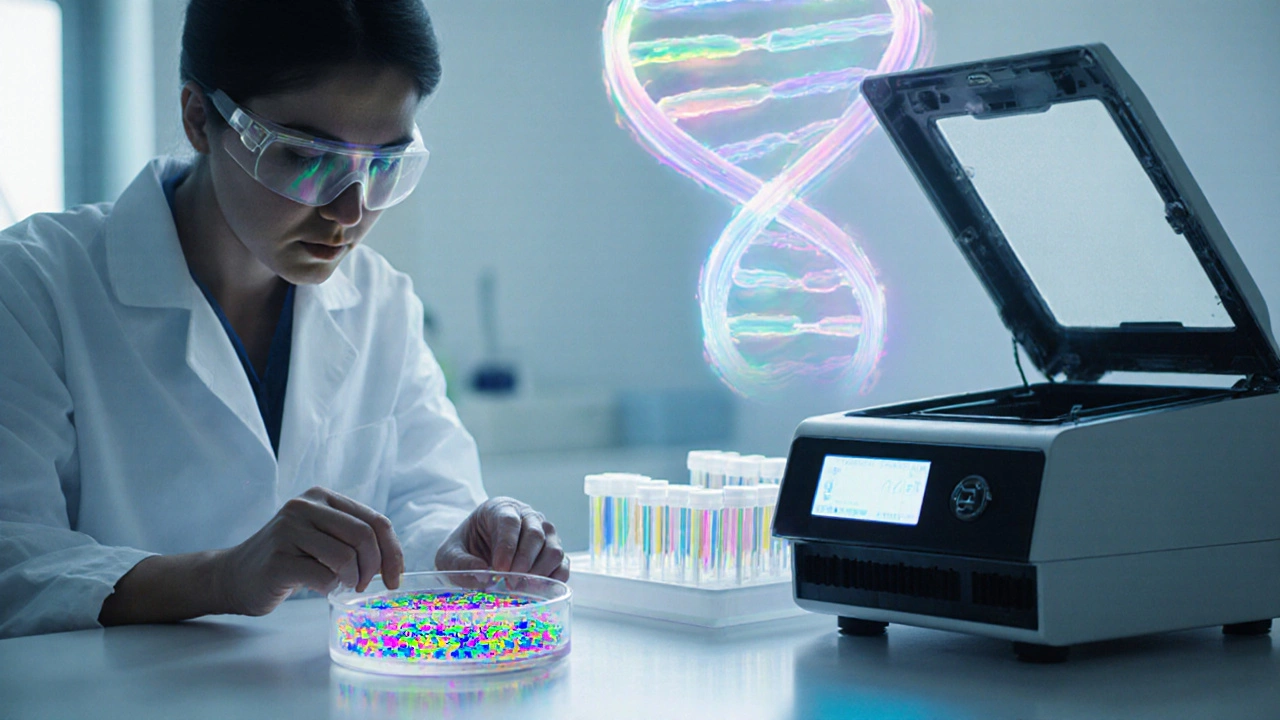PCR assay
When working with PCR assay, a laboratory technique that copies specific DNA segments exponentially. Also known as polymerase chain reaction test, it forms the backbone of many modern diagnostics. A closely related method is real-time PCR, which monitors DNA amplification in real time using fluorescent dyes. Another key concept is DNA amplification, the process of creating millions of DNA copies from a tiny template, the core action that makes PCR assays so powerful.
At its heart, a PCR assay encompasses three basic steps: denaturation, annealing, and extension. The denaturation stage separates the DNA strands, annealing lets short primers bind to target sequences, and extension copies the DNA with a heat‑stable polymerase. Real‑time PCR requires fluorescent probes that emit signals proportional to the amount of amplified product, linking the assay directly to quantitative results. Diagnostic testing leverages this quantitative power to measure viral load, detect bacterial pathogens, or identify genetic mutations within hours instead of days.
Lab technicians typically start with sample preparation—extracting clean DNA or RNA from blood, swabs, or tissue. The extracted nucleic acid is mixed with primers, nucleotides, buffer, and the polymerase enzyme in a reaction tube. The tube then undergoes rapid temperature cycling in a thermocycler. Each cycle doubles the target DNA, so after 30‑40 cycles you end up with a massive product that can be visualized on a gel or measured by fluorescence. The choice of primers defines specificity, while the polymerase (often Taq) dictates speed and robustness. Quality control includes no‑template controls to catch contamination and standards for quantification.
The applications of PCR assays stretch across medicine, research, and industry. In infectious disease, clinicians rely on PCR to confirm COVID‑19, flu, or HIV infections, often reporting viral load numbers that guide treatment. In genetics, PCR helps screen for carrier status of cystic fibrosis or BRCA mutations. Oncology labs use PCR to track minimal residual disease after chemotherapy. Environmental labs detect water‑borne pathogens, and food safety teams screen for bacterial contamination. All these scenarios share the same underlying engine: a precise, rapid, and sensitive DNA amplification method.
Below you’ll find a curated collection of articles that dive deeper into each facet of PCR assays—how to choose primers, avoid false positives, interpret viral load curves, and compare real‑time PCR platforms. Whether you’re a student, a lab technician, or a healthcare provider, the posts ahead will give you actionable insights to make the most of this essential technology.
Diagnostic Testing for Enteric Infections: Methods, Accuracy, and Tips
Learn how modern diagnostic testing pinpoints the bugs behind gastro‑intestinal illness. Compare stool culture, PCR, antigen tests, and multiplex panels, plus guidance on accuracy and cost.
read more